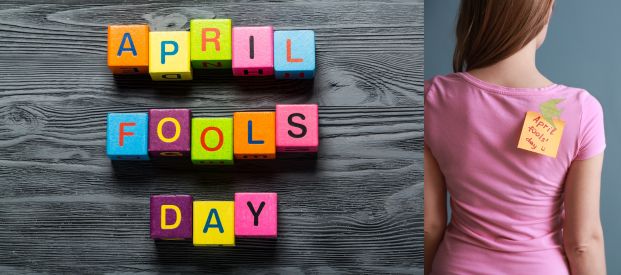The Origins of April Fools’ Day
Practical jokes and hoaxes abound on 1 April as pranksters around the world celebrate April Fools’ Day. But why is this date associated with all things mischievous and how did it come about?
Festivities and mischief-making
The exact origins of April Fools’ Day are unclear. One theory is that it may have originated in ancient Roman times with a festival called Hilaria. This event took place in late March to celebrate the arrival of spring and involved light-hearted festivities and mischief-making.
Another popular theory is that April Fools’ Day began in 16th-century France when King Charles IX ordered the switch over from the Julian calendar to the Gregorian calendar. Before this, New Year’s Day was celebrated around the time of the spring equinox at the beginning of April. However, with the adoption of the Gregorian calendar, New Year’s Day was moved to 1 January. The changes were not adopted immediately by everyone, which led to confusion and differing New Year celebrations. Those who continued to celebrate the New Year in April became the subjects of practical jokes, subsequently leading to the tradition of April Fools’ Day.
Hunt the gowk
Today, April Fools’ Day is celebrated around the world, with many countries and cultures getting into the spirit of fun and silliness. In Scotland the event is held over two days and is known as Gowk Day after the Scots word for cuckoo. The name originates from a popular prank called “hunt the gowk”. Young people would be sent off to search for newborn spring cuckoos, but the hunt was always held too early for the birds to be found.
April fish
In France, Italy and Belgium, April Fools’ Day is known as April Fish, or Poisson d’Avril, Pesce d’Aprile and Aprilvis in their respective languages. A popular joke is for children to attach paper fish to the backs of unsuspecting friends and family members. It is thought that this custom dates back to the 16th century and the aforementioned calendar changeover in France. However, in those days the hapless April Fool would have a real fish attached to their back.
Pranks and hoaxes
In recent times, some memorable April Fools’ Day hoaxes have appeared in newspapers and on TV. Perhaps the most famous one occurred in 1957, when the BBC programme Panorama reported on Swiss farmers harvesting spaghetti from trees. Presented by the eminent broadcaster Richard Dimbleby, the programme claimed that the virulent pest, the “spaghetti weevil”, had been eradicated.
April Fools’ Day hoaxes subsequently became a tradition for the BBC, with other memorable jokes including the introduction of “smell-o-vision” in 1965, Big Ben going digital in 1980 and a fight breaking out behind presenter Des Lynam during a broadcast of the sports show Grandstand in 1989. In 2008, BBC iPlayer released a spoof video about a colony of flying penguins, and in 2018 the Newsround team announced the introduction of a news show for pets, Newshound, presented by a dog called Pebbles.
According to tradition, pranks should only be played until midday. After that time, anyone who plays a joke or hoax becomes the April Fool themselves. So, enjoy the fun and silliness this April Fools’ Day, and be sure to check your back for any paper fish!










